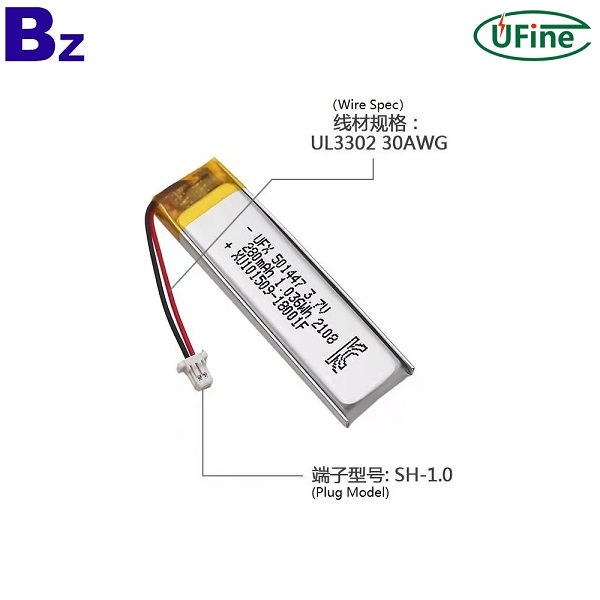The polymer li-ion battery has many advantages such as high energy density, smaller size, ultra-thin, lightweight, and high safety and low cost. It is a new type of battery. In terms of shape, lithium polymer batteries are characterized by ultra-thinness, and can be made into batteries of any shape and any capacity to meet the needs of various products. The minimum thickness of this type of polymer battery can reach 0.5mm.

From the structural point of view, the full name of lithium polymer battery should be lithium ion polymer battery, so it seems that lithium polymer battery is actually a kind of lithium ion battery. The only difference between the two is the electrolyte used inside. Lithium-ion batteries use liquid electrolytes, while polymer lithium-ion batteries use solid polymer electrolytes. This polymer can be solid or semi-solid (gel-like).
The polymer lithium ion battery has the following 6 major characteristics:
1. There is no battery leakage problem, the battery does not contain liquid electrolyte, and uses colloidal solid electrolyte
2. The battery can be bent and deformed: the polymer battery can be bent about 90°.
3. The capacity is twice as high as that of a lithium battery of the same size.
4. It can be made into a single high voltage: the battery with liquid electrolyte can only obtain high voltage by connecting several batteries in series. Since polymer battery has no liquid itself, it can be made into a multi-layer combination in a single battery to achieve high voltage.
5. Thin battery can be manufactured: Take 3.6V 400mAh thin battery as an example, its thickness is 0.5mm.
6. The battery can be designed into a variety of shapes.
In short, the polymer lithium-ion battery is the mainstream in terms of technology and future development, and its characteristics can be described as numerous advantages.


